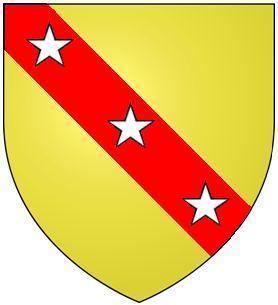Name George Warwick | ||
 | ||
George Wentworth Warwick Bampfylde, 4th Baron Poltimore (1882–1965) (and 9th Baronet) of Poltimore and North Molton, Devon, was a peer and major landowner in Devonshire, whose family had been seated at Poltimore from about 1300. He was a Justice of the Peace for Devon and occupied the honorary position of High Steward of South Molton, Devon.
Contents
Origins
He was born on 23 September 1882, the eldest son and heir of Coplestone Richard George Warwick Bampfylde, 3rd Baron Poltimore (1859–1918) by his wife Hon. Margaret Harriet Beaumont (d.1931), daughter of Wentworth Blackett Beaumont, 1st Baron Allendale (1829–1907).
Career
He was educated at Eton College and at New College, Oxford, where in 1910 he gained a half blue in polo winning 10-2 against Cambridge. He served as Lieutenant in the Grenadier Guards. He fought in World War I and was twice mentioned in despatches. He served in the Quartermaster-General's staff and in the Lincolnshire Yeomanry and was a Major in the Royal North Devon Yeomanry. He served as a Justice of the Peace for Devon and held the honorary office of High Steward of South Molton, near his seat of North Molton.
Master of Fox Hounds
He was Master of the Dulverton Foxhounds, Somerset, whose territory covered his North Molton estate, between 1920 and 1963. The fox-hunting season always commenced with a meet at Court House, his home, but he was strict to ensure that no hunting commenced before his tenant farmers had harvested their wheat, so as not to damage the crop. Today the Dulverton Foxhounds continue to hold the popular annual Boxing Day meet in North Molton Square, near Court House.
1930's Agricultural Depression
During the Depression of 1930s his agricultural tenants at North Molton struggled to pay their rents, and Lord Poltimore displayed his own austerity at that time by wearing patched up breeches rather than buying new ones.
Marriages & progeny
He married twice:
Emigration to Rhodesia
Following the accidental death in 1936 of his only son and heir apparent, he lost heart and further prompted by poor health and arthritis (possibly caused by a lifetime spent hunting) and by the victory of the socialist Labour Government under Clement Attlee, after World War II he sold most of the 5,000 acre North Molton estate, owned by his family for about 400 years, and moved to Rhodesia in Africa, where he lived the rest of his life on his estate of Benwell, near Bindura. He sold about 2/3rds of the North Molton estate and its many farmsteads to his tenant farmers. He never returned to England, and it was said that on his departure from North Molton the rooks deserted Bampfylde Clump, a landmark clump of beech trees on his estate planted by his ancestors.
Death & burial
He died on 13 July 1965 at age 82 and was buried at Benwell, Southern Rhodesia, Africa. A memorial stone bench exists in the Bampfylde Memorial Garden created for his son in North Molton churchyard, next to Court House, his manor house, to which is affixed a tablet inscribed:
"In loving memory of George Wentworth Warwick Bampfylde the 4th Baron Poltimore 1882-1965 and his wife Cynthia Rachael 1885-1961 who were laid to rest at Benwell Southern Rhodesia".Landholdings
In 1920 he sold the Poltimore estate but the house and grounds failed to find a buyer. The house was let to Poltimore College, a girls' school which closed in 1939. In 1940 the boys from Dover College were evacuated to Poltimore House, which became a private hospital in 1945 which was taken over by the National Health Service when it came into existence in 1948. It closed as a hospital in 1974. Soon after the accidental death in 1936 of his only son and heir apparent, he also sold most of the North Molton estate and moved to Rhodesia in Africa. In 1968 his widow's residence was Benwell, Bindura, Rhodesia. The remnant of the North Molton estate, about 1/3 of his former holding, including Court House, the manor house, he gave to his daughter (by his first wife) Hon. Sheila Margaret Warwick Bampfylde, the wife of Sir Dennis Stucley, 5th Baronet (1907–1983) of Affeton Castle and Hartland Abbey in Devon. Sir Dennis Stucley, a keen sportsman, made Court House at North Molton his preferred residence due to the renowned pheasant shoot which had been established by the Bampfyldes, which he further developed. Today his descendants operate the shoot on a commercial basis and reside at Court House and on other properties on the estate.
